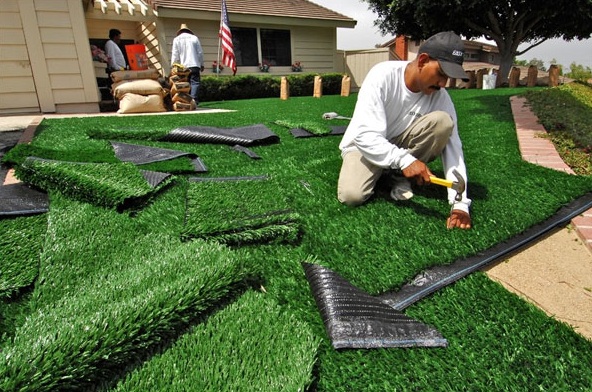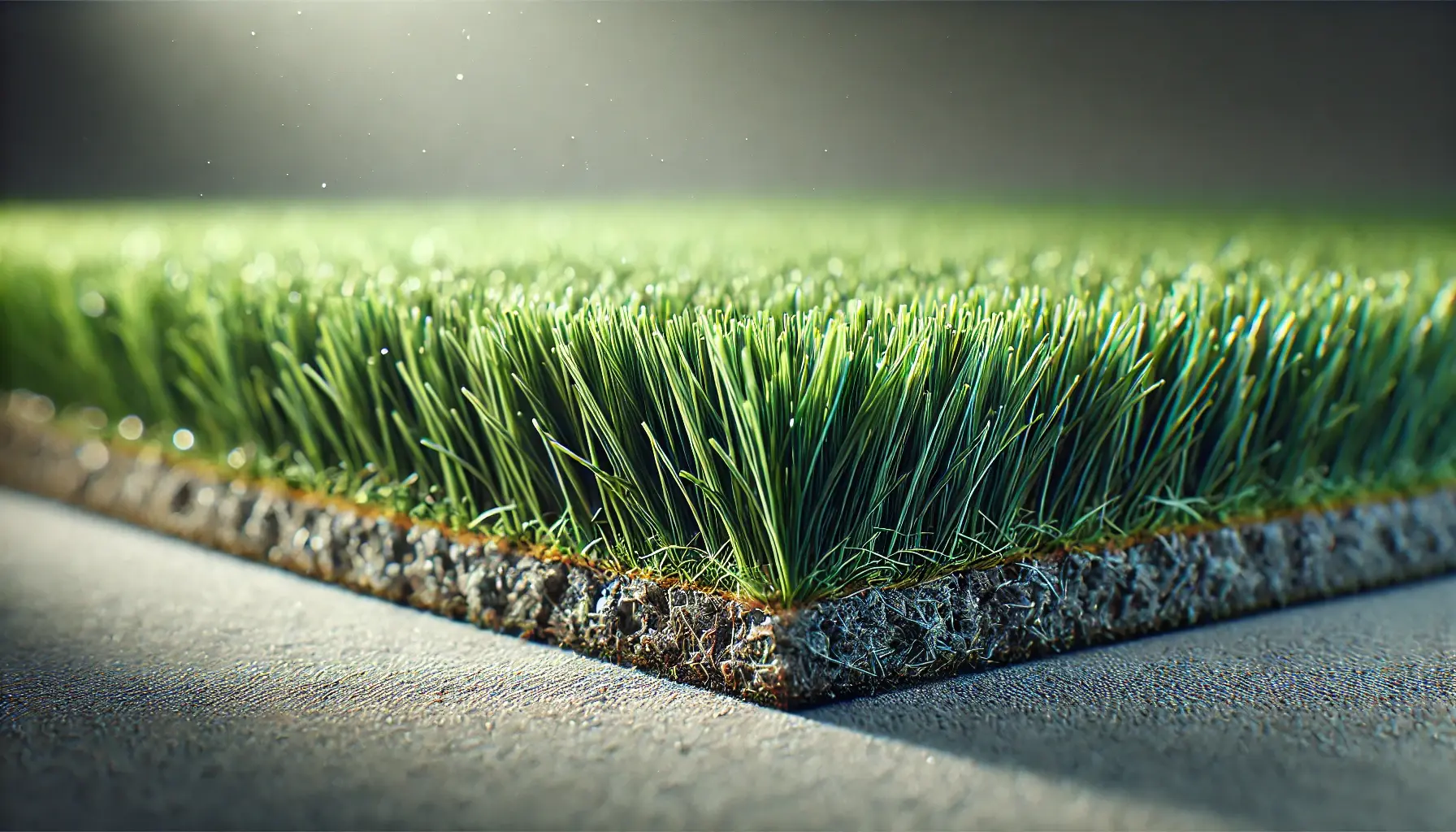Upgrade Your Outdoor Space with Arizona Artificial Turf for a Vibrant Green Look
Delve Into the Environmental Benefits of Opting for Synthetic Grass Solutions
The adoption of synthetic grass options provides a compelling opportunity to address pressing ecological obstacles. By significantly reducing water use and minimizing the application of damaging chemicals, these options not only promote lasting landscape design yet also secure neighborhood ecosystems. Moreover, the reduced carbon footprint related to lowered upkeep activities adds to a much more sustainable strategy to land monitoring. However, the ramifications of these benefits expand beyond mere preservation efforts, increasing questions concerning their long-term influence on habitat conservation and overall eco-friendly balance. Checking out these measurements discloses a complex interaction worth considering.
Water Preservation Conveniences
One of the most considerable advantages of artificial lawn is its capacity to save water. In contrast, artificial lawn does not require watering, substantially minimizing the general demand for water sources.
By removing the need for normal watering, synthetic grass adds to lasting landscape practices and assists minimize the environmental influence of too much water usage. The conservation of water prolongs to the decrease of overflow, which can lead to dirt erosion and waterway pollution.
Furthermore, the installment of artificial turf allows homeowners and communities to designate water sources extra successfully, concentrating on essential uses such as drinking water and farming. The change in the direction of synthetic grass not just advertises liable water use but also aligns with broader environmental goals targeted at maintaining natural deposits.
As communities progressively focus on sustainability, the water conservation benefits of man-made turf provide a compelling situation for its adoption in property and business landscaping jobs.
Minimized Chemical Use
The shift to synthetic grass considerably decreases the dependence on chemical therapies frequently utilized in all-natural turf upkeep. Typical lawn monitoring generally includes the application of herbicides, plant foods, and pesticides to promote development and control insects. These chemicals can pose dangers to human health, regional wild animals, and the atmosphere, adding to soil and water contamination.
On the other hand, synthetic grass removes the requirement for these damaging substances. When installed, it needs marginal upkeep, mostly including routine cleaning and occasional infill replenishment. This decrease in chemical use not only profits the instant environment however also adds to broader environmental stability. By minimizing the launch of artificial compounds into the environment, artificial turf advertises much healthier dirt and water systems.
In addition, the lack of chemical drainage associated with synthetic grass setups helps safeguard regional waterways from contamination, supporting water life and keeping biodiversity. Phoenix turf companies. As neighborhoods progressively focus on lasting techniques, selecting synthetic turf presents a feasible solution that aligns with ecological conservation goals. Through this shift, homeowner can take pleasure in rich eco-friendly rooms without endangering eco-friendly health and wellness, leading the way for an extra lasting future
Lower Carbon Impact

Additionally, the installment of synthetic grass can cause substantial water preservation. Natural lawns need substantial amounts of water for irrigation, which not just adds to the carbon impact connected with water removal and therapy however likewise strains local water resources. In contrast, artificial turf needs marginal maintenance, calling for no watering, thus significantly decreasing water usage and its connected power prices.
In addition, the longevity of synthetic grass adds to its lower carbon impact. With a lifespan of up to 15 years or more, the need for frequent substitutes is lessened, resulting in less waste and lower power intake in production and taking care of standard grass alternatives. Overall, synthetic grass provides a lasting choice for eco conscious landscape design.
Environment Conservation
Environment conservation is an important factor to consider in the dispute over landscape design options, particularly when comparing synthetic grass to all-natural turf. Natural grass lawns usually require substantial maintenance, including the usage of fertilizers, herbicides, and chemicals, which can recommended you read adversely influence local communities. These see chemicals can seep right into the soil and waterways, damaging indigenous flora and fauna and interrupting neighborhood environments.
Fabricated grass gets rid of the demand for harmful chemicals, thereby securing neighboring wildlife and maintaining the honesty of bordering ecosystems. The installation of fabricated grass can lead to the conversion of former yard locations right into more biodiverse landscapes, such as pollinator yards or indigenous plant areas, which can support local wild animals.
Eventually, the change to synthetic grass not just conserves water and minimizes upkeep efforts yet additionally fosters an extra harmonious connection between human tasks and the all-natural setting, promoting habitat preservation at the same time.
Long-Term Sustainability
Lasting sustainability is an essential consider assessing the advantages of synthetic grass over typical lawn yards. One of the most substantial benefits of synthetic lawn is its sturdiness; it can last approximately 15-20 years with very little upkeep, whereas all-natural turf requires regular reseeding and substitute. This durability reduces the demand for constant resources, such as water, fertilizers, and chemicals, which are crucial for preserving a healthy yard yard.
Additionally, artificial grass adds to a reduction in carbon discharges related to lawn care tools. Conventional yards commonly call for gas-powered mowers, leaners, and blowers, every one of which add to air pollution. Arizona turf. On the other hand, artificial lawn eliminates the need for such tools, advertising a cleaner environment
Moreover, the manufacturing of synthetic grass significantly makes use of recycled products, improving its sustainability account. As manufacturers embrace green practices, the environmental footprint of man-made lawn remains to decrease.

Conclusion
The fostering of artificial lawn solutions provides significant environmental benefits, including substantial water conservation, minimized reliance on hazardous chemicals, and a reduced carbon impact. Synthetic turf help in preserving all-natural habitats by lessening land disturbance and promoting long-lasting sustainability through the use of resilient materials. Collectively, these factors highlight the possibility of synthetic grass to add positively to environmental health and offer a sensible alternative to standard landscaping methods in an increasingly resource-conscious world.
In comparison, fabricated lawn does not require watering, dramatically reducing the overall demand for water sources. By minimizing the launch of synthetic substances into the environment, artificial grass promotes healthier dirt and water systems.
In addition, the installation of man-made lawn can result in considerable water preservation. In comparison, artificial turf requires marginal upkeep, needing no watering, thus dramatically minimizing water usage and its connected power prices.
